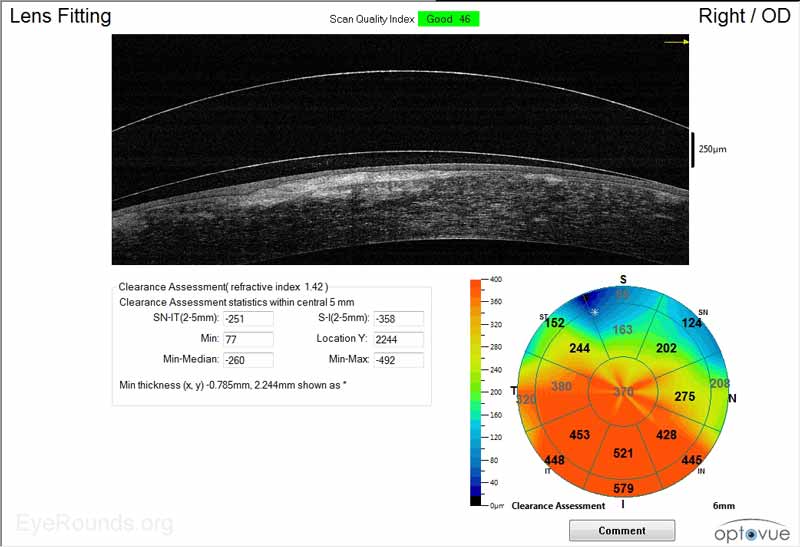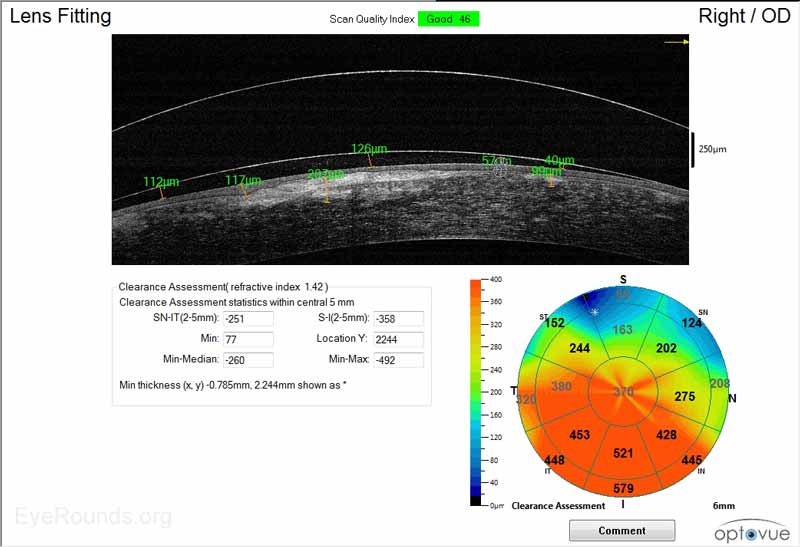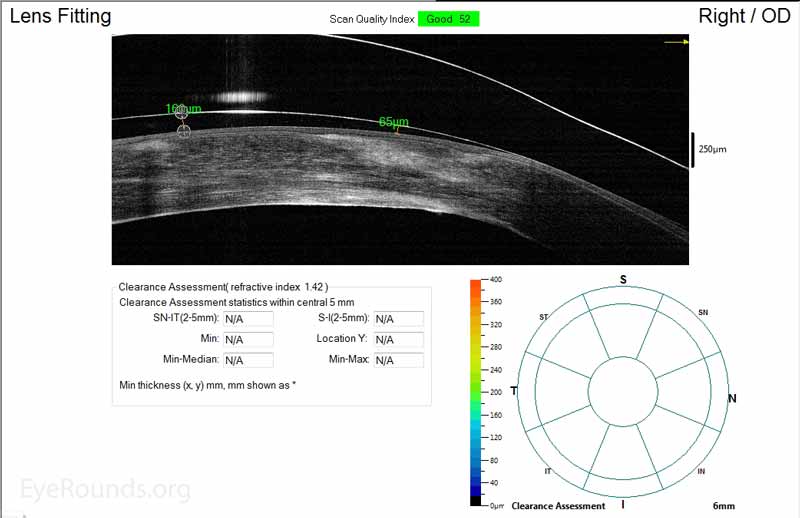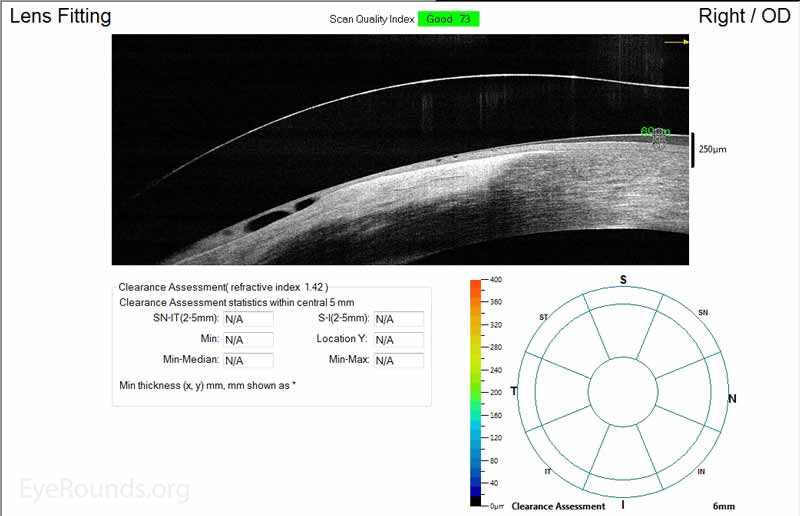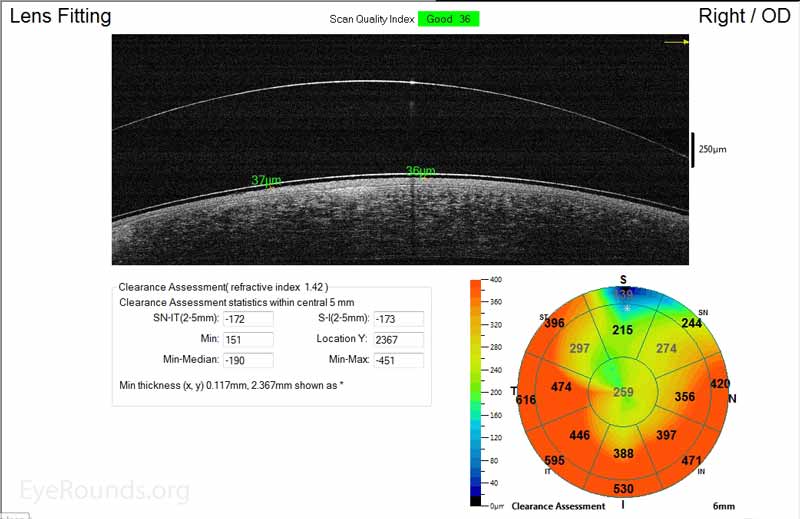Scleral Lens Touch
Category: Contact Lens
Photographer: AM
Contributor: Tressa Larson OD FAAO
A major benefit of scleral RGP contact lenses over corneal RGP contact lenses is that scleral lenses completely vault the cornea. This is beneficial in dry eyes because it places the cornea under water, in keratoconus because a contact lens that rubs induces scarring, and in fitting highly irregular shapes that would not allow for centration with a corneal lens. Here I show scleral lens touch on a few different types of cornea. The first patient shown here has a highly irregular cornea with scarring due to trauma (her glasses were smashed and the jagged temple penetrated her cornea). The central sag is good, but nasally where her scarring is the thickest, the scleral lens is touching. While the patient is comfortable and happy now, this area of touch could become compression, inducing corneal neovascularization or edge lift and discomfort. The second patient shown here is also a trauma (penetrating injury with a nail that resulted in aphakia as well as corneal scarring). His central sag is very low, but he also has touch over the area of scarring. The location of the scleral lens touch determines how you compensate for it. If the touch is due to a pterygium, you may be able to design a microvault to just give additional space in that area. If the touch is due to a graft junction or scar, you may be able to widen the optic zone or you may need to increase the overall diameter of the lens. If the area of touch is central, you will increase the overall sag by either manipulating the base curve or simply increasing the sagittal depth of the scleral lens depending on the lens design's customizable features.

Ophthalmic Atlas Images by EyeRounds.org, The University of Iowa are licensed under a Creative Commons Attribution-NonCommercial-NoDerivs 3.0 Unported License.

